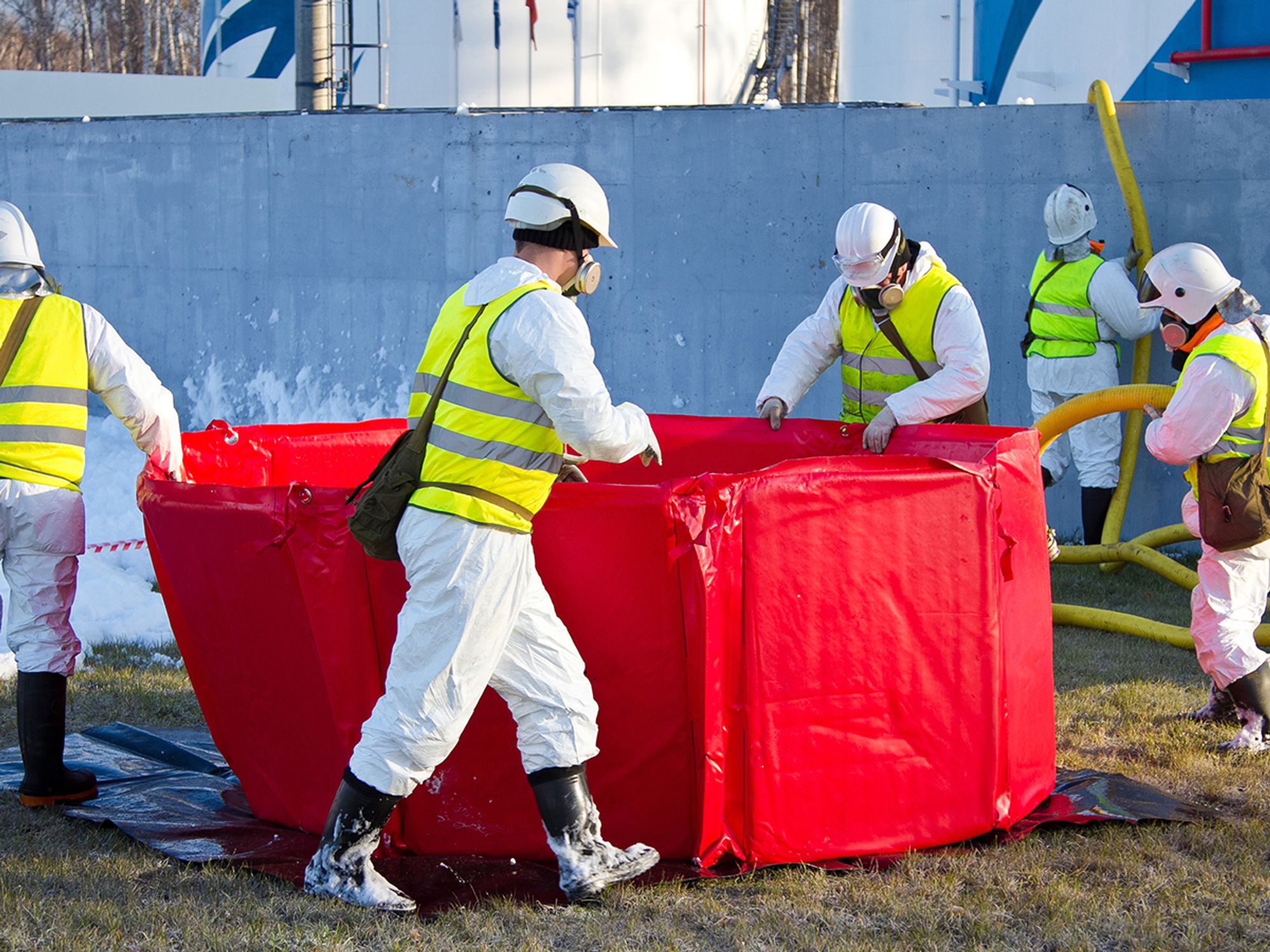Covered emergency response operations

- Under HAZWOPER, emergency response primarily involves employees or other responders from outside the immediate area of the hazardous substance release.
- Incidental hazardous substance releases that are controlled or neutralized by employees in the area or that don’t pose any hazards do not count as emergency response operations.
Emergency response operations for releases of, or substantial threats of releases of, hazardous substances must comply with paragraph (q) of 29 CFR 1910.120 and/or 1926.65. The Hazardous Waste Operations and Emergency Response (HAZWOPER) Standard defines the term “emergency response or responding to emergencies” as follows: “A response effort by employees from outside the immediate release area or by other designated responders (i.e., mutual-aid groups, local fire departments, etc.) to an occurrence which results, or is likely to result, in an uncontrolled release of a hazardous substance ...”
Responders from outside the immediate release area
The HAZWOPER Standard, at 1910.120(q) and 1926.65(q), uses the term “responders” generally to refer to employees who respond to emergencies.
The standard covers responses “by other designated responders.” Under the language of the standard, responders are a separate group, different from employees outside the immediate release area who are directed to respond to the emergency by the employer.
Emergency responders include employees who are working in the immediate release area (not just outsiders) if the employer designates them as such. For example, a release of chlorine gas above the “immediately dangerous to life and health” (IDLH) level, obscuring visibility and moving through a facility, is an emergency situation even if the initial responders are from the immediate release area. Employees who would respond to this situation, whether they work in the immediate area or come from outside, would need to act in accordance with 1910.120(q).
Employees are not barred from responding to releases in the immediate release area that would otherwise require outside assistance from a trained HAZMAT team, even though the definition of an emergency response states that an emergency response is “a response effort by employees from outside the immediate release area.”
Conversely, incidental releases of hazardous substances that are routinely cleaned up by employees from outside the immediate release area need not be considered emergency responses solely because those responsible for cleanup come from outside the immediate release area.
For example, paint thinner is spilled in an art studio, and the janitor is called from outside the immediate release area to mop it up. The janitor does not have to respond in accordance with 1910.120 and 1926.65. (The janitor would, however, be expected to understand the hazards associated with paint thinner through training under 29 CFR 1910.1200, Hazard Communication.)
What the term “emergency response” does not include
To clarify the definition of the term, the Occupational Safety and Health Administration (OSHA) explains that an “emergency response” does not include responses to:
- Incidental releases of hazardous substances where the substance can be absorbed, neutralized, or otherwise controlled at the time of release by employees in the immediate release area, or by maintenance personnel.
- Releases of hazardous substances where there is no potential safety or health hazard such as fire, explosion, or chemical exposure.
